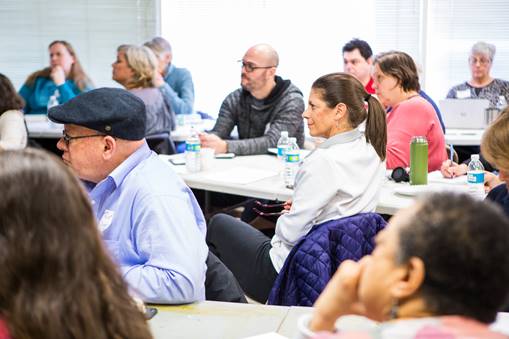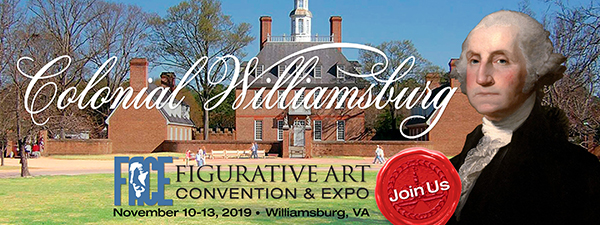Artist statistics > “Artists are a potential economic powerhouse that can fuel an uncertain economy, predicated on the right training and tools,” says Daniel DiGriz, Programming and Education Director for the Clark Hulings Fund. “Where artists thrive, the economy thrives.”
Artist Statistics: Results from the 2019 “Report on the Working Artist”
By Daniel DiGriz
For a long time, the art world has been having a quiet conversation around the need for business training and professional networks for artists — and the potential returns from investing in the creative economy. But there’s been a dearth of agreement on what that means, possibly because there’s been a lack of evidence of what works in a sustainable, repeatable manner. Attend any number of gatherings, expos, panels, and workshops, and one could get the impression that all an artist needs to prosper are some tips on social media, a better artist statement, and the occasional wine and cheese with fellow creators. Advocating for anything more extensive than that awakens the argument of the muse versus the market, and a debate over who is selling out versus doing “pure” art.
Representing two years of compilation and original data collection and analysis, the Report on the Working Artist — just released by the Clark Hulings Fund for Visual Artists (CHF), for whom I led the effort — injects a healthy dose of clarity into that conversation and potentially kicks off several new ones. CHF is a nonprofit organization that promotes the legacy of American painter Clark Hulings by equipping working visual artists to be self-sustaining entrepreneurs.
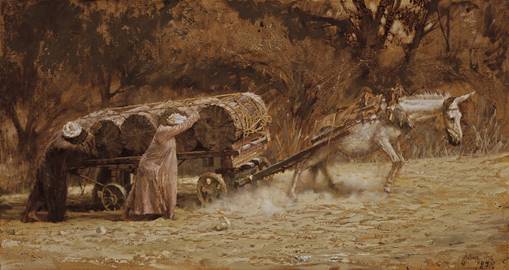
The report is structured into four categories of insight:
• The Contributions and Challenges of working artists
• The Needs and Demands of working artists
• The Impacts of various interventions (specifically of entrepreneurial learning programs and business training), and
• The Gaps and opportunities for further research.
Read the Report on the Working Artist here.
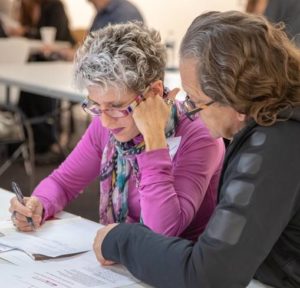
Surprise Findings
Some of the results are expected, though perhaps not to the profound extent we observed. The research underscores the importance of peer networks and business training, both from artists’ own assessment of their necessity, and their impact on artists’ ideas, behaviors, and business and financial outcomes. But there are some surprises.
Working artists are job creators. 25% of working artists have hired someone to help them with their art business. This ranges from one to multiple hires, and spans across practice areas—from creative process, to financial, legal, logistical, and even scientific areas of specialization. This corresponds neatly with the observation that where artists prosper in a community, other industries around that art practice also prosper.
Working artists are self-fueled reinvestors in their economies. 27% of working artists have reinvested over 50% of revenue from their art businesses back into the enterprise, exploding the common myth that working artists live hand to mouth.
The collated results from multiple credible research sources indicate that not only does the art industry contribute disproportionately to the American economy (NEA), but that it specifically generates revenue for urban economies and creates out-of-state revenue opportunities for rural areas. There is potential for much more, and this data indicates how our economies can get more.
When given entrepreneurial training, working artists become intensely committed entrepreneurs and are willing to commit between 25% and 50% more of their time to developing their art businesses.
This isn’t by accident. When artists participate in an entrepreneurial learning event at a regional art-business conference, there is a 40% increase in clarity around the actions needed to achieve their career objectives. Training produces clarity, clarity produces commitment, and commitment produces behavioral changes.
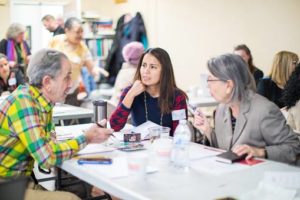
67% of the working artists who receive concentrated business education take part in more events, obtain more media coverage, increase conversions from their marketing, and sell more art or gain more commissions. A whopping 75% increase their involvement in sales and marketing channels, track their sales more effectively, and increase their total income from making and selling art. That feeds the cycle of reinvestment into their businesses, job creation, and the local economy.
Entrepreneurial education is one of the twin drivers of this process — the other is peer networking. 69% of working artists seeking entrepreneurial learning at local events, and 94% of those looking for a concentrated program of business learning, are highly interested in professional networking. Those already high numbers go up even more after artists receive business training in an environment with professional peers.
Given that this demographic is 3.6 times more likely to be self-employed than the overall workforce (US Census Bureau) and that the demand for entrepreneurial learning specifically designed for working artists is so high, it’s counterintuitive that business education represents just 5% of the curriculum for a BFA.
Related Article > The Artist’s Solution to Feeling Isolated
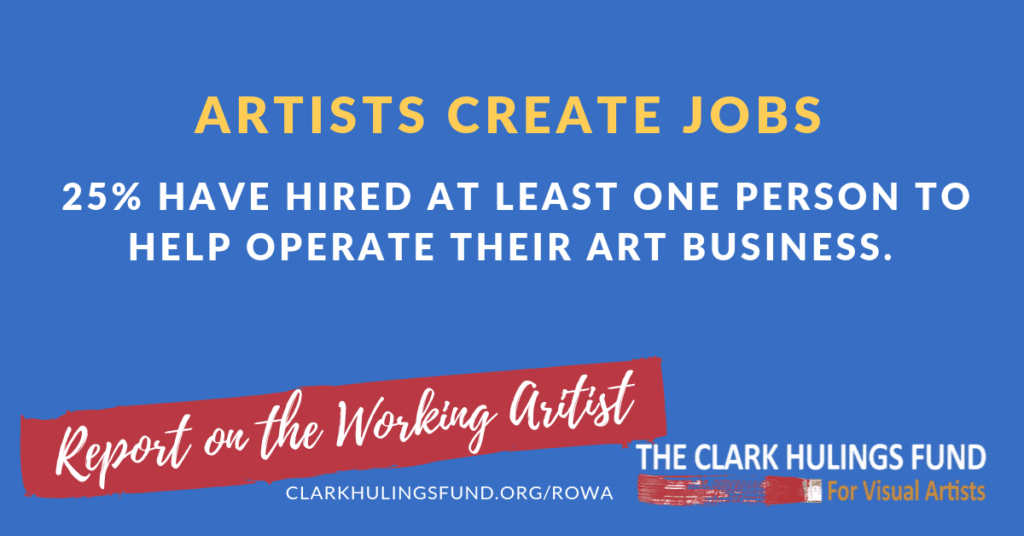
Takeaways for Working Artists
The template for economic empowerment of working artists isn’t just more funding for the arts; it’s also the acquisition of a robust business education and extensive professional peer networks. Those factors move the needle. That’s demonstrated now because the data exists, not only on dollars spent or number of artists served, but on change of mindset, the quantity and nature of the time and effort invested in art businesses, and the bottom-line results of that investment. In other words, even if we had previously sensed what would work, we now know for certain.
Artists can now make their case for support in local and regional economies based on a commitment to an area of business that is proven to be effective. Working artists are an untapped source of innovation and energy, in a time when some traditional industries, like manufacturing, are either in decline or caught up in the volatility of trade deals and tariffs. Artists are a potential economic powerhouse that can fuel an uncertain economy, predicated on the right training and tools. Where artists thrive, the economy thrives.
This point also affects art collectors, in that part of why collectors become repeat buyers of new artists’ work is the potential sustainability of an artist’s career, which, of course, depends on the feasibility of their businesses. If the artist is not going to be there tomorrow, making interesting work and maintaining a collector-creator relationship, the art is often less attractive as a purchase and potentially becomes less valuable in the market. It’s therefore in everyone’s interests to apply empirically supported initiatives to ensure artists thrive.
Related Article > Four Days of Painting Growth: A Figurative Art Event
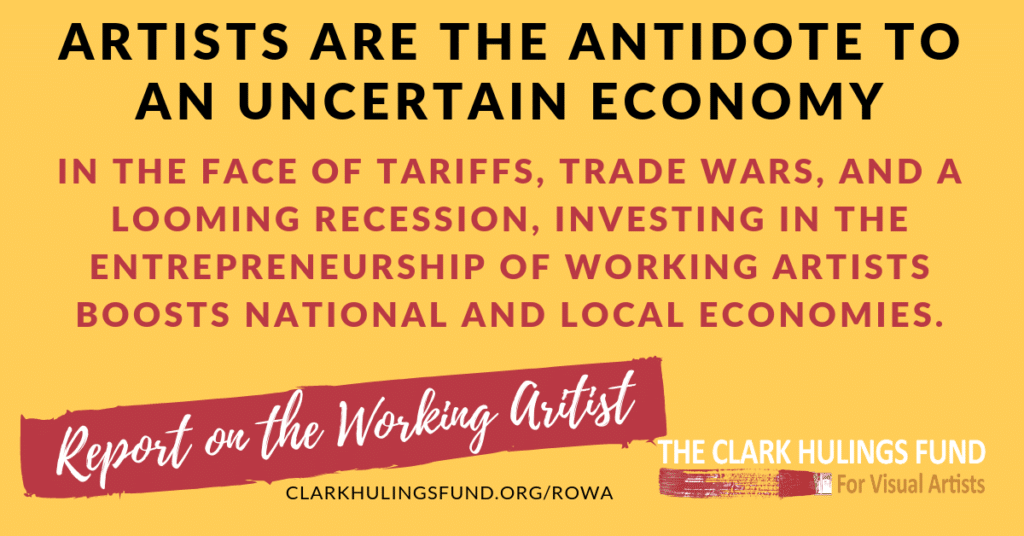
The Nature of the Research
The data science team at CHF used two methodologies in tandem. The first was to collect and aggregate all digitally extant research on the working artist. What we saw is that lots of important information is “locked up” in organizational silos. No one is collating data or analyzing insights in a concerted manner across the boundaries of individual nonprofit organizations, governmental agencies, academic sources, and private research. A finding by any one group does not augment the findings we get from another, so we are not seeing an ever-clarifying body of research. The data science team at CHF set out to change that, simply by taking on the task of combing through everything we could find and looking at where results were similar or dissimilar.
Concurrent with that effort, as part of our deployment of programs for working artists, CHF conducted repeated measurements across a multi-year span, multiple programs, and multiple cohorts, culminating in a body of original research and analysis. We found that this kind of rigor around the life of the working artist was almost universally lacking, and yet it’s a key ingredient in arriving at a shared understanding.
We then compared both of these research formats to arrive at a unified set of observations. We looked at what is knowable based on the consensus of observers combined with empirical research.
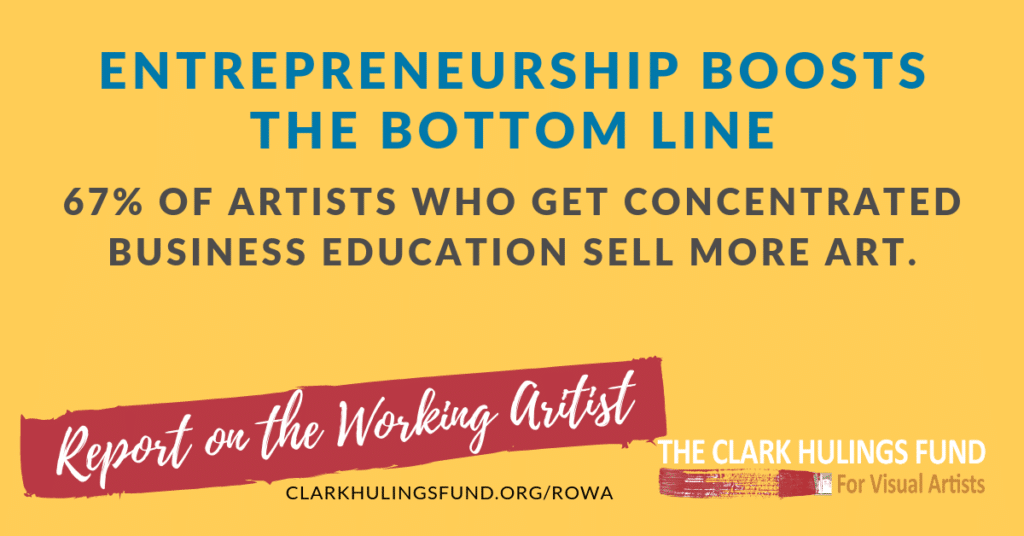
A Word About Data Science in the Arts
The foundations of the “Report on the Working Artist” include:
• Combining the analytics of organizations of diverse pedigrees, which can lay the groundwork for collaboration toward common goals.
• Publishing findings on concrete results so that we can understand the links between changes in attitude, behavior, and bottom-line outcomes. This creates measurable ROI for both philanthropic and municipal stakeholders.
• Emphasizing replicability of results across multiple samples and cohorts, so that we can rely on the data — not as a one-off point of interest but as a comprehensive roadmap for engineering better outcomes for all of us.
• Identifying the gaps that remain as opportunities for further substantive research, targets for ongoing data science initiatives like the innovative one at CHF, and a way forward for arts organizations in general, and for those who champion working artists in particular.
• A commitment to data science itself. The fact that an organization like CHF even has a data science team is notably unique.
To quote CHF’s resident data analyst:
“The ‘Report on the Working Artist’ is just a drop in the ocean of what’s possible, but it’s paving the way for advanced research and data analysis that allows initiatives on behalf of working artists to develop better questions and hypotheses, and shed light on how exactly we can create a thriving art industry revitalized by thriving artists.” — Lily Dulberg
We believe the opportunities to accumulate research, collect data, and combine insights are a commitment worthy of support. If we ensure that artists can thrive, we’ll get more sustainable art. Many of us think art has the potential to change the world — certainly it makes the world a place we can love. The “Report on the Working Artist” is a salvo on behalf of such a world.
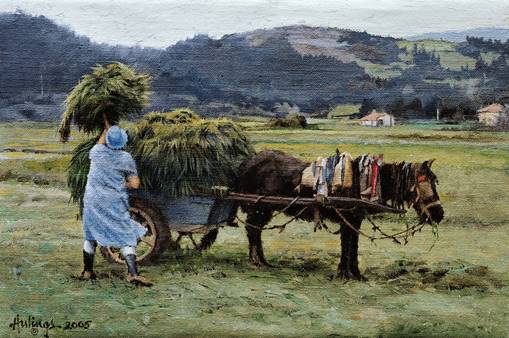
About Daniel DiGriz: In his role as the Clark Hulings Fund’s Programming and Education Director, Daniel also guides the Data Analysis Team’s analytic logic, research communications, and data-collection methodologies. He is the host of CHF’s Thriving Artist™ podcast and leader of the organization’s Brand Story, Peer Networking, Sales Conversations, and Technology practice areas.
***


